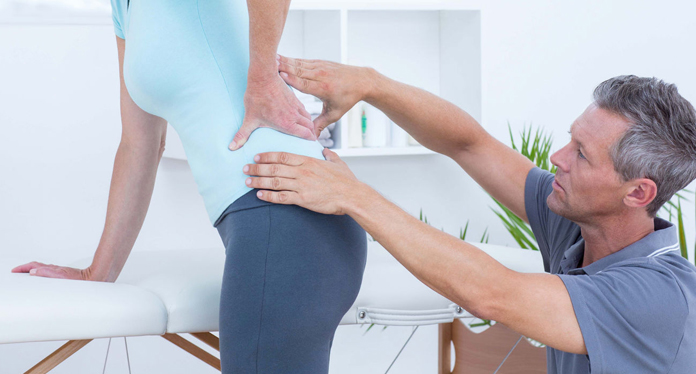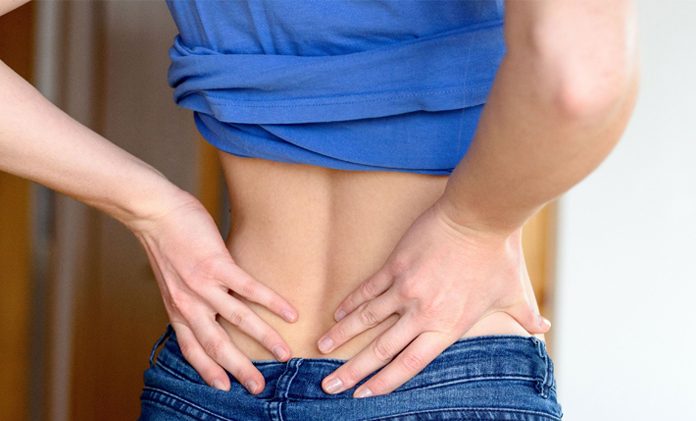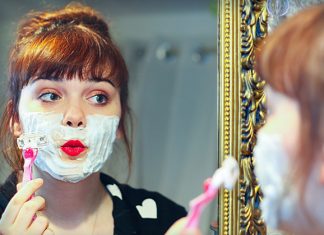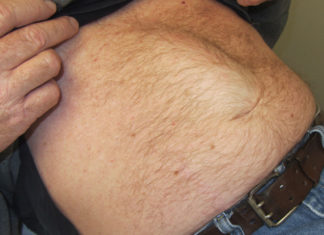Causes of low back pain can be many and can lead one to visit the doctors. As per the NINDS or National Institute of Neurological Disorders and Stroke, lower back pain is more commonly associated with job-related disability. The majority of people experience lower back pain at least once in their lifetime.
Injuries like a muscle sprain or strain can result in lower back pain for days. Even certain diseases like cancer in the spinal cord, herniated disc, sciatica, kidney infections, arthritis or spinal cord infection can lead to severe lower back pain.
Acute back pain only lasts for a few days or weeks, but chronic back pain continues for a more extended period for months.
Low back pain occurs mostly in individuals between 30 and 50 years as the body starts ageing. As one grows older, the fluid content between the spinal vertebrae reduces, which leads to irritation in one’s spine.
With age, even the muscle tone gets affected, making the lower back more prone to injury. So as age advances, it is necessary to strengthen the back muscles and use suitable body mechanics to avoid further problems with lower back pain.
Causes of Lower Back Pain
If you are wondering why your lower back is hurting, few reasons can lead to such problems.
Strains
The ligaments and muscles in the back can get stretched or torn due to excess physical activity or movement. Symptoms of strains include pain and stiffness in the lower region of the end. In some severe cases, it can lead to muscle spasms as well. Rest and physical therapy are the best ways to reduce the problems of the symptoms.
Disc Injury
The discs in the spinal cord are prone to injuries. The problem with the lower back increases with age. A herniated disc or slipped disc happens when the cartilage around the disc pushes against the nerve roots and spinal cord. The cushion that protects the spinal vertebrae pushes outside, which eventually compresses the nerve roots.
Disc injury generally occurs abruptly after lifting something weighty or twisting the back. Disc injury usually stays longer than 72 hours.
Sciatica
Sciatica can happen with a herniated disc when the disc pushes to the sciatic nerve. The sciatic nerve helps to connect the spine to the legs. Therefore, sciatica can cause pain in the region of the legs and feet. This pain is sharper and feels like pins or needles. Some even experienced the burning sensation too.
Spinal Stenosis
Spinal Stenosis occurs when the spinal column narrows and puts pressure on the spinal nerves and cord.
Spinal stenosis usually happens due to the degeneration of the discs. This leads to compression of the spinal cord or nerve roots by soft tissue or bone spurs. Pressure on spinal nerves or Spinal Stenosis causes symptoms like numbness, weakness, and cramps. People with spinal stenosis experience symptoms that turn worse when they stand and walks.
Abnormal Spine Curvatures
Scoliosis, lordosis, and kyphosis are all common conditions that form an abnormal curvature in the spine. These are congenital conditions and are first diagnosed in teenagers and even children. The unusual shape of the curvature puts pressure on the muscles, ligaments, vertebrae and causes pain and bad posture.
Other Conditions
Several conditions cause low back pain. These conditions include arthritis, fibromyalgia (chronic pain and tenderness in the muscles, joints, and tendons), spondylitis (the joint between the spinal bones gets affected with inflammation), and spondylosis (a disorder that leads to the loss of normal spinal function and structure). Although age is the primary reason for spondylosis, the location and rate of deterioration vary among individuals.
Other conditions like problems with the kidney and bladder, pregnancy, endometriosis, uterine fibroids, ovarian cysts, and cancer can also lead to low back pain.
Diagnosis of Low Back Pain
A physical examination by the doctors can help to identify and determine the problem with lower back pain. In the case of lower back pain problems, the doctor may check the reflexes of the patient and their responses to certain types of sensations. This procedure helps to find out whether the lower back pain can cause problems to nerves.
The doctor monitors the condition of the patients for several weeks before they are sent for the final tests. Most lower back pain problems usually disappear on their own with the help of simple treatment that can be done at home quickly. If the pain does not vanish despite the home treatment, the patient must undergo several testing processes.
In addition to lower back pain, if you are experiencing any other symptoms, it is essential to seek medical help.
Image tests like X-rays, ultrasound, CT scans, and MRI may be needed to detect the problems of bones, discs, ligaments, and tendons at the lower back. A bone density test or bone scan can help one to identify bone issues.
Electromyography or tests of nerve conduction can help in identifying the problems with nerves.

Treatment for Lower Back Pain
Home Care Treatment
Self-care treatment is very crucial, especially for the initial 72 hours after the pain starts. If the condition does not improve even after home treatment, it is essential to consult a doctor. Avoid physical activities as much as possible for the first few days and apply ice in the lower back region.
Doctors usually recommend ice usage for the first two to three days, followed by a heat compress. Alternate utilization of ice and heat can help to relax the muscles.
Over-the-counter pain medicines, like ibuprofen or acetaminophen, can help to relieve pain. Try to lie on your side with a pillow between the legs. A warm massage or bath can relax the stiff muscles in the lower back.
Medical Treatment
Low back pain can happen with several different conditions, like muscle weakness and strain, pinched nerves, and spinal cord misalignment.
There are a few possible medical treatments like medications, usage of medical appliances, and physical therapy.
Your doctor will suggest the proper dosage and drugs based on the symptoms you are suffering. Some medications can include muscle relaxants and non-steroidal anti-inflammatory drugs. The doctor may also prescribe pain relief drugs or steroids to reduce the problem of inflammation. Injections may also be required to treat lower back pain issues. Exercises and massages with the help of a physiotherapist and manipulation of the back and spinal cord can reduce the problems further.
Surgery
Surgeries are required for severe physical conditions. When all other treatments do not work, surgery may be necessary.
A discectomy can relieve pressure from a nerve root when pressed on by a bone spur or a bulging disc. The surgery will remove a small portion of the lamina, the hard part of the canal inside the spine.
Intradiscal electrothermal therapy is about inserting a needle into the disc. As the needle is heated for 20 minutes, it makes the disc wall thicker and reduces the inner disc are bulging out. This therapy also reduces the irritation of the nerve.
In nucleoplasty, a thin and long device is inserted to remove the inner disc material. The method also uses radio waves to shrink and heal the tissue. Ablation or radiofrequency lesioning is a way of using radio waves to interrupt the communication of the nerves among themselves.
Spinal fusion strengthens the spine and reduces painful motion. The surgeon fuses the vertebrae with metal screws or bone grafts. A spinal laminectomy, also called spinal decompression, eliminates the lamina to increase the size of the spinal canal. This reduces pressure on the spinal nerves and cord.
Lower back pain among women is more common than in men. There are several ways to prevent low back pain. Prevention techniques can lessen the problems. Prevention techniques like daily exercises, weight loss, and management, not lifting every item and maintaining proper posture can make one healthy and avoid many health complications. It is important to sleep on a firm bed and sit on a chair with support. Women should avoid high heels. One should quit smoking and reduce drinking to prevent severe health problems. Moreover, the nicotine in the cigarette causes harm to the spinal cord and reduces the flow of blood.






